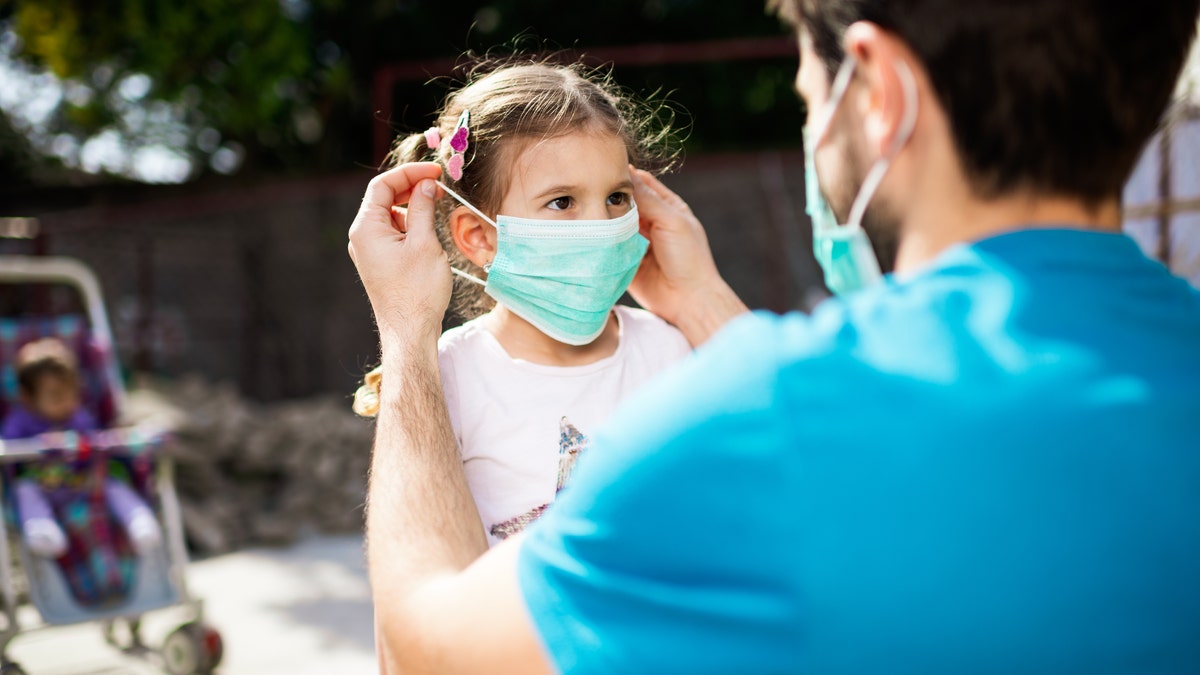Fox News Flash top headlines for November 11
Fox News Flash top headlines are here. Check out what's clicking on Foxnews.com.
Teachers and parents have adjusted their classrooms, homes, teaching methods and overall lifestyle in the age of coronavirus to accommodate remote learning and social distancing, including wearing a mask while physically in a school building or out in public.
But for some children and others with learning disabilities or sensory issues, the mask mandate is creating an extra hurdle for both them and their caregivers and educators.
Amanda Kelly, a board-certified behavioral analyst and the home-based programs director at Firefly Autism Services in Denver, Colo., said her team has been working to teach parents and caregivers to honor tolerance in regard to safety.
“Parents are obviously very concerned that their children are safe,” she told Fox News.
TEENS WHO PARTICIPATE IN EXTRACURRICULAR ACTIVITIES HAVE BETTER MENTAL HEALTH, STUDY FINDS
In using a method that focuses on tolerance, a child might work up the ability to wear the mask for an uninterrupted period of time. For instance, if the child won’t wear the mask for an hour, start with a small goal of simply putting it on.
“How do we build up the tolerance – make sure the client has a choice in what materials we use for their masks, and understanding what type of sensory sensitivity it is, if it’s a smell thing, a feeling thing,” she said. “We really want to make sure that we start really small in terms of having people tolerate wearing a mask, and you can do that by using lots of reinforcement.”

Giving the child a choice in mask material can also help alleviate some hurdles. (iStock)
Over time, Kelly said, you may see a systematic improvement in the amount of time the mask is tolerated. Of course, she added, this approach may not work for everyone, and there will be cases where mask-wearing is not feasible for the client.
NEWLY CONFIRMED CORONAVIRUS CASES AMONG US CHILDREN SURGE
“In that case, we try to do everything we can to make sure everyone else is doing safety measures,” she said, like making sure everyone in the house is socially distancing in public, sanitizing and wearing a mask of their own.
She also added that when going out in public, calling ahead to a restaurant or store to let them know about the mask issue can help alleviate a potentially stressful situation.
“Try and educate your community,” she said. “There’s a lot of prep work that can be done ahead of time – try not to operate by consequences, operate by preparing ahead of time. We want to make sure we’re doing everything before the event to make it more likely that the event itself will be successful. You can’t guarantee it will be, but you can at least try.”
The mask, which covers a good portion of the face when worn correctly, can also make it difficult to interpret social cues, which is not only a hallmark issue for people on the autism spectrum disorder but can also be difficult for anybody in a social setting.
CORONAVIRUS-RELATED FACE MASKS PROTECT THE WEARER, TOO: CDC SAYS IN UPDATED GUIDANCE
Kelly said her team has been teaching clients how to take perspective instead of trying to rely on social cues that are hidden behind the mask. They’ve also been working with clients to understand vocal cues and interpret conversation accurately rather than trying to focus on reading eyes and interpreting body language.
“We focus on what’s most efficient and effective, which is to really understand the reciprocal conversation piece and the perspective of the other person,” she said.

